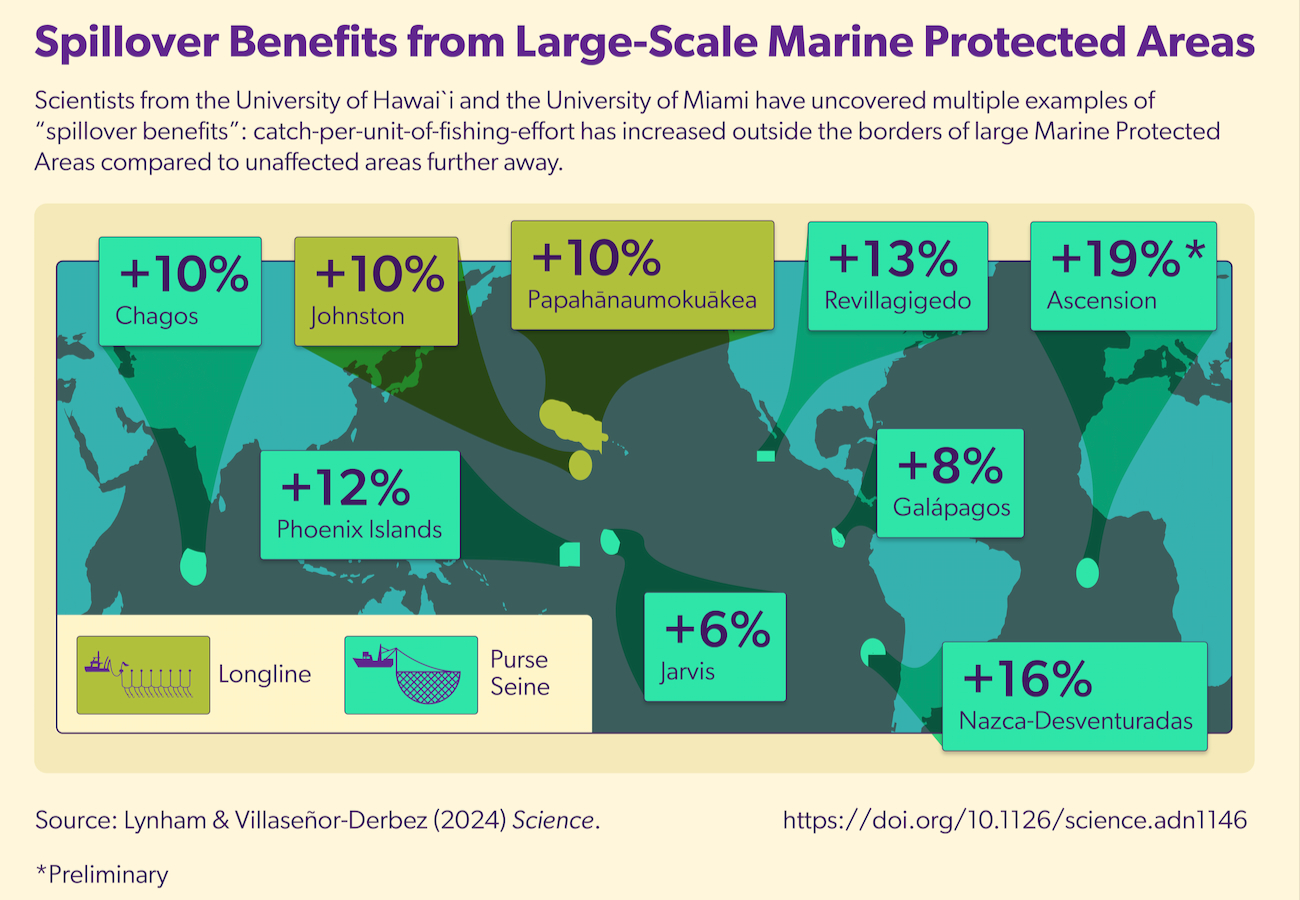Recently created Large-Scale Marine Protected Areas (LSMPAs) like Revillagigedo in Mexico are potentially large enough to protect highly migratory species like tuna, especially bigeye tuna, possibly leading to increases in catch rates for tuna fisheries operating outside their boundaries. The findings were published in Science on Dec. 12, 2024.
Key findings:
- The research team found multiple examples from around the world of spillover benefits, resulting in an increase in catch rates outside of marine protected areas. On average, this spillover benefit resulted in a 12 to 18 percent increase in catch-per-unit-of-fishing-effort in the waters near protected areas.
- Results across tuna species are relatively consistent, with all species showing some evidence of positive spillover ranging from 2 to 11 percent, with the strongest benefits for bigeye tuna.
- The research finds nations that engage in conservation are also reaping most of the economic benefits. For example, close to 100% of the spillover benefits from the Revillagigedo protected area in Mexican waters flow to Mexican fishing vessels.
"We found that the spillover benefits, measured as the change in catch rates, are strongest just outside the boundaries of these MPAs and get stronger over time," said Juan Carlos Villaseñor-Derbez, a co-author of the study and an assistant professor in the Department of Environmental Science and Policy at the University of Miami Rosenstiel School of Marine, Atmospheric, and Earth Science, and a core faculty member at the Frost Institute for Data Science and Computing. "The effects were strongest for the MPAs that were heavily fished prior to protection and are now well-enforced."
Understanding the interactions between Large-Scale MPAs, tuna stocks and tuna fisheries is timely given international goals to protect 30 percent of the world's ocean area by 2030 and the United Nations' Biodiversity Beyond National Jurisdiction Agreement, an international treaty aimed at protecting biodiversity on the high seas.
The authors reviewed data from 9 LSMPAs across the Pacific and Indian oceans.
"A unique aspect of this research is that we built a global database on tuna catch using only publicly available data," said Villaseñor-Derbez. "That hasn't been possible with previous studies on large-scale MPA impacts."
"In 2004, there was only one Large-Scale MPA in the world, the Galápagos Marine Reserve in Ecuador. Today there are more than 20, including Papahānaumokuākea in the Northwest Hawaiian Islands. Most of these protected areas are in waters where tuna fisheries operate," said co-author John Lynham, a professor in the Department of Economics at UH Mānoa's College of Social Sciences. "This means that we can now test, for the first time, the impact of these marine protected areas, especially on tuna species like ʻahi and skipjack, which support a global industry worth over $40 billion."
While protected areas in Hawaiʻi were not the main focus of the study, the research also reveals that the Papahānaumokuākea Marine National Monument, the world's largest no-fishing zone, has caused a 10% increase in bigeye tuna (ʻahi) catch rates near the monument, in line with a recent finding of a 13% increase by researchers from the University of Washington and the Western Pacific Regional Fisheries Management Council.
The research was funded by the National Science Foundation.







